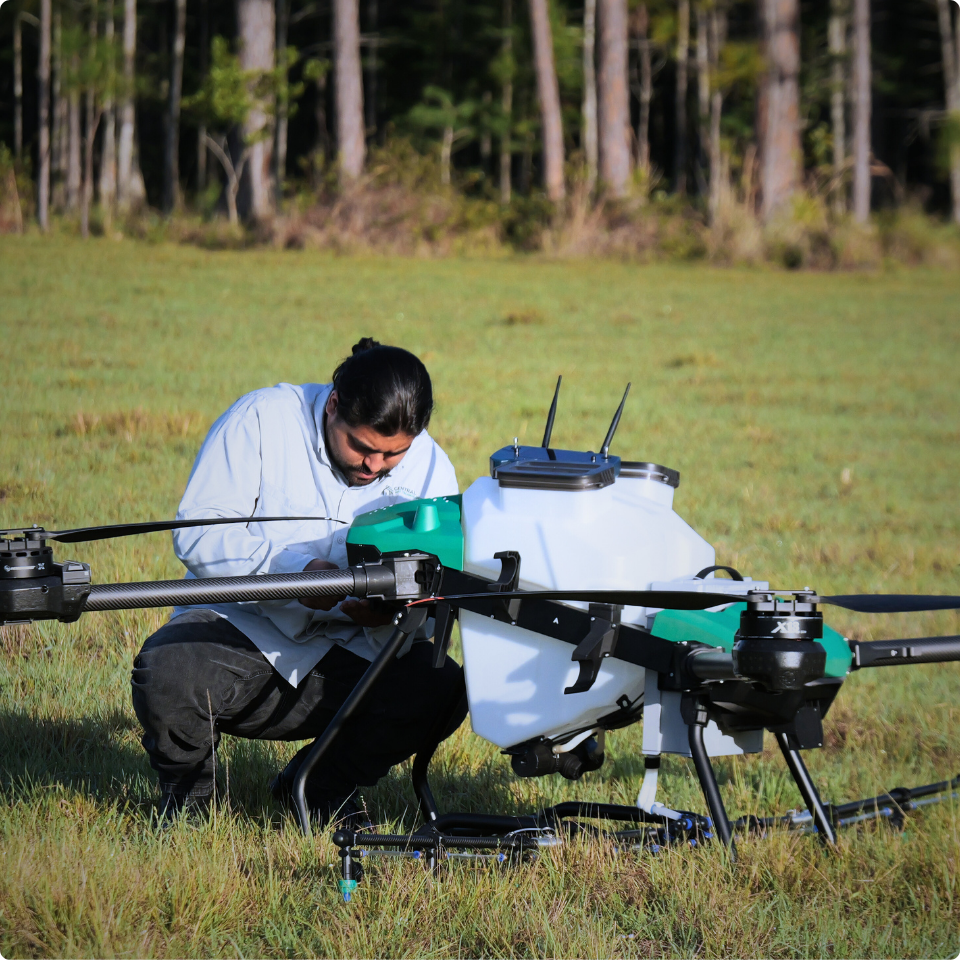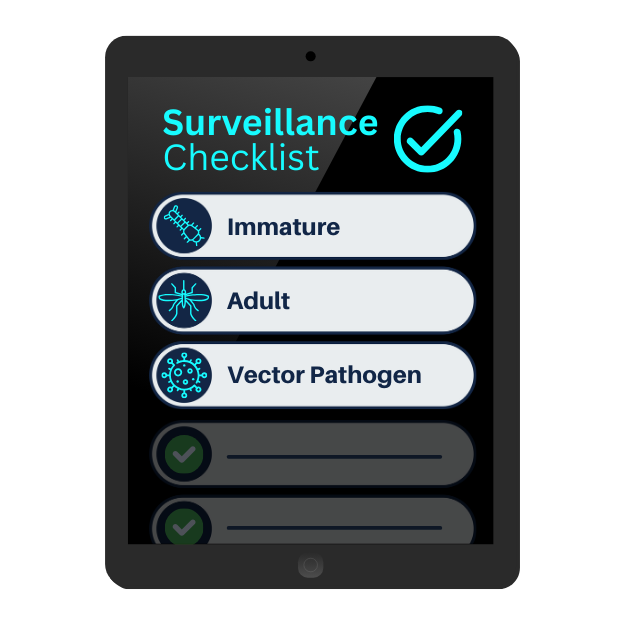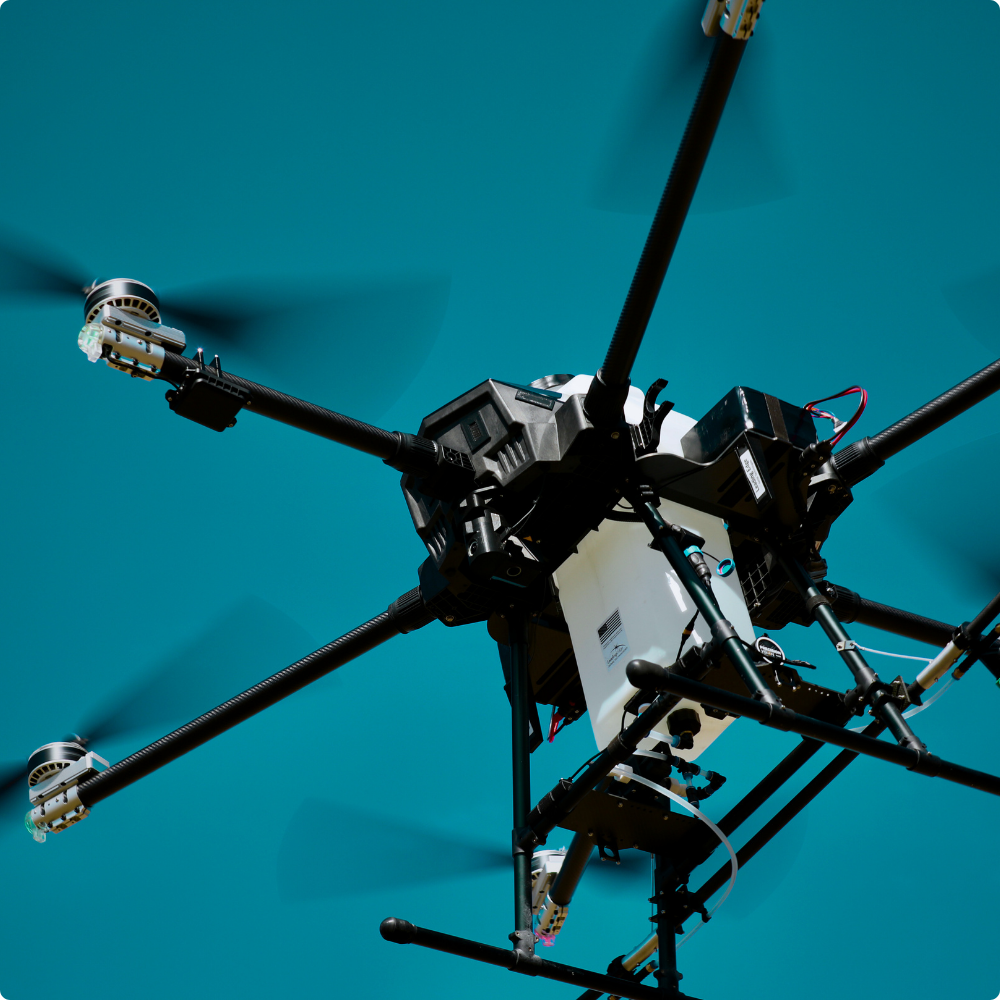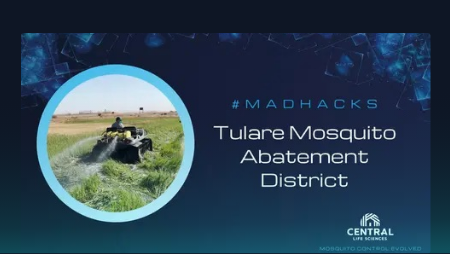EXPERT ROUNDTABLE: ASSESSING THE FUTURE OF MOSQUITO CONTROL
What does the future of mosquito control hold for MADs? We reached out to some of the leading experts in the field to get their thoughts on a number of pressing subjects related to activity, invasive species and potential climate impacts. Participants in this roundtable include:
- Michael C. Wimberly, PhD, Interim Director, Data Institute for Societal Challenges Professor, Geography and Environmental Sustainability at Oklahoma University,
- Brian D. Byrd, PhD, Professor and Program Director of the Mosquito and Vector-borne Infectious Disease Laboratory at Western Carolina University
- Daniel Markowski, PhD, AMCA Technical Advisor
-
What are your predictions for mosquito-borne disease activity in the United States over the next 5-10 years? Which current threats will increase? Are there any new threats you envision surfacing?
Michael C. Wimberly:
Although West Nile virus will likely remain the dominant arbovirus in the U.S., new hot spots of human disease risk may emerge as increasing temperatures lengthen transmission seasons and shifting rainfall patterns affect the distributions of vectors and hosts. Increasing global connectivity is contributing to the importation of other arboviruses such as dengue, chikungunya, and Zika. Local transmission of these diseases may therefore become more frequent as Aedes aegypti and Aedes albopictus continue to expand their ranges and increase in abundance. These outbreaks will be most likely to occur in cities where urban heat islands, aging infrastructure, and concentrations of vulnerable populations intersect and magnify transmission risk.
Brian D. Byrd:
Mosquito activity over the next 5–10 years is likely to persist and may even increase. I believe that being proactive and responsive to change is essential.
As for current threats, I think we face a real risk of public trust in science continuing to erode. Historically, public support for mosquito control has been strong, and it's critical that we work to maintain that trust.
Our field will require thoughtful, forward-thinking leaders who can advocate effectively and respond to the evolving needs of our communities.
Daniel Markowski:
Most long-term population or weather scientists tend to look at the macro scale, and not locally. If we take the same approach and look at historical trends with expected changes in some of these populations, it seems reasonable to conclude that over the next decade, mosquito-borne disease activity will most likely increase due to warming temperatures, shifting rainfall patterns, increased international travel, and expanding urbanization into current reservoir host habitat.
I would expect that West Nile virus (WNV) will likely remain the most significant and widespread mosquito-borne threat, particularly in urban and suburban areas with high Culex mosquito populations. Communities in the South and Midwest may experience more frequent and intense outbreaks.
-
How do you see the threat of invasive mosquito species changing for the US in the next 5-10 years? What new challenges will they pose to MADs?
Michael C. Wimberly:
Aedes aegypti and Aedes albopictus, the two most important invasive mosquito species in the U.S., will continue to expand their ranges and increase in local abundance over the next decade. Both species are associated with tropical and subtropical climates, and more of the U.S. will become climatically suitable as temperatures grow warmer. They also use artificial containers as larval habitats and are concentrated in cities and other human-dominated environments. Therefore, increasing urban sprawl will also contribute to the expansion of these species.
Brian D. Byrd:
We continue to have non-native and invasive mosquitoes show up in the US and we are recognizing them at rates much higher than ever before. That being said, in all likelihood there are new introductions in the US that just haven’t been detected yet. Aedes pertinax is a great example. It was first “recognized” in 2011 in Indian River County Florida (Shroyer et al. 2015). Because it looks similar to a couple of other floodwater mosquitoes, it took some sleuthing, including some serious microscopy and molecular techniques to identify the new (to us) species. Years later, the Florida Keys identified the same species in some of their historical collections going back to 1998 (Boehmler and Hribar, 2022). In all likelihood, this species was undetected in the US for well over a decade.
Some invasives (Ae. aegypti and Ae. albopictus) are going to require MADs to pivot and work hard to address their peridomestic ecology and diurnal behaviors. Others, like Ae. pertinax are not likely to impact MADs greatly if they already have the ability to control floodwater Aedes.
Daniel Markowski:
I would expect to see a continued expansion of mosquitoes into new regions. Aedes aegypti and Aedes albopictus mosquitoes, prominent vectors of diseases like dengue, are already expanding their ranges and this trend will almost certainly continue particularly in the Midwest, western and northeastern portions of the United States. As these mosquito populations expand, it is expected that Dengue will likely become more common in Florida, Texas, and California as conditions become more favorable for year-round or intensive mosquito activity.
For mosquito control programs, invasive species pose many challenges including the need for more intensive source reduction, evolving insecticide resistance patterns, and greater public engagement. Programs will also need to strengthen real-time surveillance and interagency coordination to detect and respond rapidly to new introductions and outbreaks associated with these invasive vectors.
-
What are some direct impacts the changing climate will have on mosquito and vector-borne disease activity in the next 5-10 years?
Michael C. Wimberly:
Rising temperatures accelerate mosquito development, shorten virus incubation periods, and expand the geographic range of mosquito-borne diseases. However, excessively high temperatures can decrease mosquito lifespans and reduce the potential for transmission. Additionally, climate factors such as rainfall, atmospheric humidity, and wind speed can influence various aspects of mosquito life history and disease transmission cycles. All these climate relationships vary across different mosquito species, which can exhibit some degree of local adaptation. All mosquitoes and their pathogens will respond to climate change, but the effects will vary depending on local environmental conditions and the species involved. Enhanced vector and disease surveillance, predictive modeling, and early warning systems will be essential for tracking and responding to these changes.
Brian D. Byrd:
Climate change will make our jobs more challenging, and it’s critical to understand your local threats, mosquito-related or otherwise, as well as your available resources.
One word that has fallen somewhat out of favor in climate change discussions is “resilience.” Resilience is often defined as the ability to withstand and respond to the wide-ranging impacts of climate change. Resilience doesn’t occur by chance; it requires deliberate preparation.
According to Forbes, “between January 2013 and January 2023, 88.5% of all U.S. counties declared a natural disaster,” including 95% of the 200 most populated counties. Natural disasters come in all forms, and while some may have little impact on mosquito or vector-borne disease activity, the odds are high that you will face a natural disaster at some point in your career.
I continue to be impressed by mosquito control professionals who plan thoughtfully for hurricanes and other tropical storms. Cultivating local preparedness and leaning on the strength of our professional community will be essential to ensuring MADs remain resilient, responsive, and ready for whatever challenges lie ahead.
Daniel Markowski:
A changing environment could directly impact mosquito and vector-borne disease activity with changing temperature cycles, precipitation patterns, and increased habitat suitability. Warmer temperatures are known to accelerate mosquito development and viral replication within the mosquitoes, leading to longer transmission seasons and expanded geographic ranges for various vector competent species.
Increased rainfall and largescale flooding events tend to create more breeding sites, especially in areas with poor drainage. On the other hand, drought conditions have been associated with concentrated mosquito and reservoir host populations around remaining limited water sources, intensifying transmission cycles. Furthermore, milder winters could allow some species to overwinter in regions they previously could not, enabling earlier seasonal activity and northward expansion.
Public health professionals will need to adapt rapidly to these changing patterns with updated risk maps, enhanced vector and arboviral surveillance capacity, and more flexible control strategies. The combined effects of a changing climate will likely increase the workload due to the unpredictability and intensity of mosquito-borne disease threats across the U.S.
References
Boehmler M, Hribar LJ. Aedes pertinax, A Lost and Found New Species Record for Monroe County, Florida. J Am Mosq Control Assoc. 2022 Dec 1;38(4):283-285.
Aedes pertinax, a Newly Recognized Mosquito Species in the United States. J Am Mosq Control Assoc. 2015 Mar;31(1):97-100.
https://www.forbes.com/advisor/homeowners-insurance/natural-disaster-statistics/
Integrated Pest Management Overview: Part 2
SURVEILLANCE
In Part 1 of our IPM series, the importance of monitoring for mosquito species population pressures was highlighted as a requirement for creating an efficient and effective mosquito control program. Here we will dive deeper into the reasoning and procedures involved with mosquito surveillance.
Highlights from Our
Regional Experts
South Central Region
Gary Ross
Mosquito pressure overall has been moderate over the region with coastal areas of Texas and Louisiana having low pressure from Marsh mosquitoes and doing very little aerial spraying. With Central Louisiana being the exception, West Nile positive pools have been very low with no other virus activity to speak of. This is typically the peak of West Nile season in this area running until mid-September. Regional weather has been warm and humid but not as hot and dry inland as usual. For instance, Dallas has only had two days of 100 degrees or more, while the average is usually 20 days of 100-degree temperatures for the season.
Southeast Region
Mike Riles
Precipitation was above normal across much of the southeast at the beginning of summer, particularly in the Florida panhandle, North Carolina, South Carolina and Georgia. Above average precipitation combined with above average temperatures across the region resulted in increased mosquito activity and adulticide applications in many areas. While larvicide applications have been moderate in West Central and Northern Florida, applications in Southern Florida are occurring daily. Researchers are also predicting an above-average Atlantic hurricane season, albeit slightly down from last year’s activity.
Western Region
Samer Elkashef
While unseasonably cooler temperatures resulted in low mosquito abundance and virus activity, Delta MVCD in Visalia recently experienced early and intense West Nile Virus activity this year. It’s also been a busy summer on the customer support front. Technical Services Specialist Dan Killingsworth joined Samer in California to help with several projects. In June, they visited with Shasta MVCD to conduct an assessment of the potential for Altosid® Liquid Larvicide use on their log decks. Later in the month, they traveled to Coachella Valley to help them maximize Altosid® P35 treatments in date fields. In July, they conducted field site work with Fresno Westside and the CUAST their drone team.
Northeast Region
Jenna Mora
Summer is in full swing in the Northeast, with warmer than normal temperatures and abnormally dry conditions in Maryland, Massachusetts and New Jersey starting the season. July then escalated to extreme heat through much of the region with pockets of heavy precipitation resulting in high levels of West Nile Virus detection and increased adulticide applications. Much of Jenna’s summer has been spent in the field and on the phone aiding districts in their control efforts and building relationships with her customers. She also remained active in her support of the NJMCA, executing a social media campaign for the group during National Mosquito Control Awareness Week.
West Central Region
Loren Cunnington
Most of the West remains hot and dry, while West Nile Virus infection rates remain high, especially in Colorado, and mosquitoes showing moderate-to-low abundance. The Colorado Department of Public Health and Environment confirmed its first human death from West Nile virus in 2025. There have been nine confirmed human cases of West Nile virus in eight of Colorado’s sixteen counties. Loren spent three days shadowing different departments at Salt Lake City Mosquito Abatement District to collaborate with their team, gain operational experience, and witness firsthand the challenges an extremely large district like Salt Lake City faces. Loren enjoyed learning about everything that went into their mosquito control operations and he plans to work alongside other districts throughout his territory over the coming years in a similar fashion.
Midwest Region
Jeromy Baumbach
Mosquito season has arrived in both North Dakota and South Dakota. The first West Nile virus detection was confirmed in Minnehaha County in South Dakota, and the South Dakota Department of Health’s West Nile Virus Prediction Model indicates a moderate year for West Nile virus cases. In North Dakota, some areas like Fargo-Moorhead have seen stable mosquito populations due to dry conditions, while other areas like Cass County have seen a recent surge in activity due to heavy rain. Both states are actively engaged in mosquito control efforts. South Dakota districts are employing trapping, spraying and larva control tactics, while districts in Williston and Williams County in North Dakota are continuing with aerial and ground adulticide missions to control populations.
Take Flight on the Future of Mosquito Control
Mosquito Control Evolved means optimizing our products to consistently deliver best-in-class performance. And the emergence of drones and UAS aerial technology represents an exciting opportunity to develop leading larvicides for more targeted treatments in hard-to-reach areas. The recent launch of Central UAS Technologies allows Central Life Sciences to support our mosquito control partners better than ever with enhanced application technology and expertise.
While this is just the beginning of our corporate partnership, Central Life Sciences has a long history of collaboration with the founders of Central UAS Technology. While operating as Leading Edge, the group partnered with Central Life Sciences on research confirming the superior performance of many of our larvicide solutions via drone applications. Products such as Altosid® P35, Altosid XR-G® Ultra and Fourstar® BTI CRG.

What's Your Vision?
We'd love to hear any feedback you had on this edition of Vector Vision, and any suggested topics you'd like to hear covered in future versions.
Share your Vector Vision with us in the form below.



















